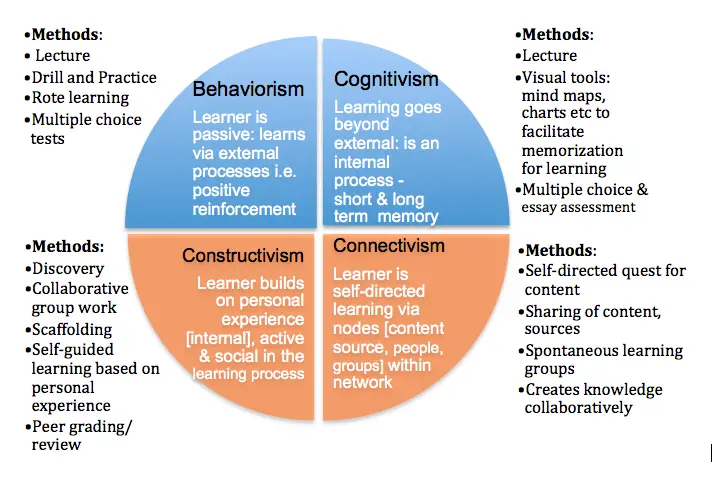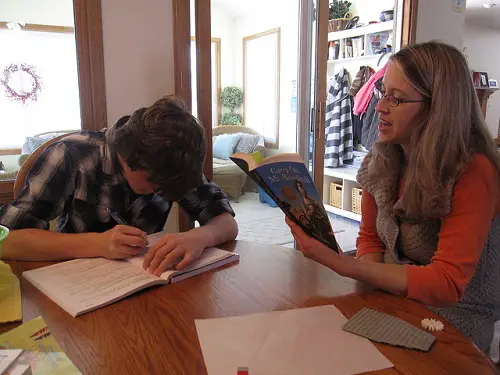
Constructivism is an educational theory which asserts that people do not acquire knowledge and understanding by mere passive transmission. Instead, we create new knowledge through experience and social interaction, fusing it with what we already know, including learnings before starting school. It is connected to several philosophical perspectives, particularly those that deal with epistemology, ontology, politics, and ethics.
It is also helpful to note the difference between interpretivism and constructivism. Interpretivism is founded on the premise that reality is socially constructed and fluid. Constructivism aspires to change the world, whereas interpretivism seeks to comprehend the world (Miremadi, 2020).
Who is the Father of Constructivism?
Constructivism theory’s roots can be found in the notion of cognitive development by Swiss developmental psychologist, Jean Piaget, the father of constructivism. He proposed that learning happens through active meaning building rather than passive receptivity. A condition of disequilibrium or imbalance results when we, as learners, face an experience or a circumstance that disagrees with our present way of thinking. Then, to return balance or equilibrium, we must change the way we think. To accomplish this, we strive to integrate the new information into our existing knowledge by connecting it to what we already know in order to make sense of it. When we are unable to do this, we redesign our current knowledge to a higher level of thinking to adapt the new information to our outdated style of thinking.
Similarly, Kelly’s theory of personal constructs suggests that humans interpret the world using mental models or established patterns. Based on our experiences, we construct or comprehend the world in different ways. We try to apply these patterns to new experiences when we come across them (Kelly, 1991). For instance, we are aware from experience that we must not touch anything that appears hot or sharp.
Four Types of Constructivism (Ecole Globale, 2022):
Trivial Constructivism
It is one of constructivism’s most fundamental and uncomplicated variations. It sees the learner as one who constructs knowledge by interpreting personal experiences in accordance with his cognitive and mental capabilities. It requires deliberate participation and is not simply induced by the surroundings.
Radical Constructivism
Emphasizing the production of knowledge, radical constructivism contends that the knowledge included in textbooks lacks much significance. It can be related to how mathematics operates, but it is challenging to comprehend and use.
Social Constructivism
The experiences and learning processes of an individual are greatly influenced by peers and members of society. Students’ participation in various school activities is directly influenced by teachers, families, friends, administrators, and peers. The impact of this effect extends beyond the school. As a result, social constructivism is a crucial kind of constructivism
Cultural Constructivism
A place’s culture and customs have an impact on a person’s perceptions and opinions about things. Hence, learners’ cultural heritage can be used to infer the elements influencing their perception.
The Principles of Constructivism (Boyd & Chapel, 2022):
1. Teachers Seek and Value Students’ Points of View
In a constructivist classroom, students are encouraged to expound on their ideas and use evidence to support their viewpoints. This is in contrast to traditional education, when students are expected to supply the one correct response the instructor is searching for. Constructivist teachers can get students to share what they are thinking and why by asking encouraging questions.
2. Classroom Activities Challenge Student Assumptions
Students are encouraged to investigate a part of something they have not tried out or given much thought to. Constructivist instruction focuses on challenging and enlarging student perspectives, whether it be through the creation of new work (i.e., writing a dialogue script instead of an essay) or a new point of view.
3. Teachers Pose Problems of Relevance
Exploring challenging and contemporary issues helps students connect with the subject matter. Students’ motivation to learn and their grasp of the content can both be increased by connecting what they are learning to concepts or issues that are relevant to their life and interests.
4. Teachers Build Lessons Around Big Ideas
Students must master a number of fundamental ideas, such as the ability to recognize cause and effect, evaluate written material critically, and engage in inquiry-based exploration. Constructivist lessons are designed to promote mastery of these fundamental notions or big ideas.
5. Teachers Assess Learning in the Context of Daily Teaching
Teachers typically impart knowledge for a predetermined period of time before administering a test to see whether or not students have understood it. Assessment in constructivist teaching involves focusing on what still needs to be done each day in order for students to succeed. Assessments, like discussion questions or group projects, are frequently real-time and on-the-spot.
The Constructivist Curriculum
An essential component of a constructivist classroom is negotiation. It brings educators and students together for a single goal. Negotiating curriculum entails custom-building classes every day to fit the learners’ needs. It means deliberately planning to have learners to contribute, and to alter, the educational program, so that they will have a real investment both in their learning and the results. Negotiation also means creating explicit, and then confronting, the limitations of the learning context and the non-negotiable requirements that apply (Boomer, 1992)
If students are developing their own concepts, posing their own questions, and making a valiant effort to find the answers for themselves, they will study harder and more effectively, and what they learn will mean more to them. They must make decisions related to schooling. Through bargaining, students develop a sense of ownership over the task they must complete and subsequently develop a commitment to it (Cook, 1992).
The Constructivist Teacher
A constructivist educator gives pupils a variety of options and choices for their projects. Rejecting the conventional method of instructing students, the teacher earns their trust and asks them to take part in a constructivist process that lets them influence their own learning. He then follows up on students’ inquiries and interests. Learning is built on broad concepts and the duty of the instructor is to guide and communicate with the learners to support the creation and increase of knowledge.
Examples of Constructivist Classroom Activities (Kurt, 2021):
- Reciprocal teaching/learning- Two or more learners work together.
- Inquiry-based learning- Students formulate their own inquiries, then use research and observation to try to find answers. They connect their past knowledge with the results of their investigation after emphasizing the arguments for their response. A new project may then be created by identifying questions based on observed gaps.
- Problem-based learning- As compared to inquiry-based learning, problem-based learning focuses on issues that exist in the actual world. Students collaborate to discover potential solutions while improving their communication and teamwork skills.
- Cooperative learning- This is a small-group activity which highlights interdependence. Cooperative activities, in contrast to the majority of constructivist activities, need group collaboration to solve problems. Cooperative learning does not divide work; rather, group members draw on one another’s expertise to deepen their own understanding.
Constructivism and Motivation
Autonomy is essential in generating intrinsic motivation (driven by internal rewards) which ensue in learning environments that provide avenues for students to be actively involved in the activities and decision-making process. When kids take ownership of their education, they learn how to motivate themselves even when facing complex lessons. Unfortunately, those who are extrinsically motivated (i.e., desire for rewards or attention from others) tend to prefer simple problems which do not require deep understanding and often rely on teachers for feedback (Ryan & Deci, 2000).
Disadvantages of Constructivism
On the other side of the coin, constructivism may have significant drawbacks (Roberts, 2020):
- Constructive teaching involves substantial preparation, which frequently necessitates expensive long-term professional development.
- Teachers are unable to tailor the curriculum to each student individually in a classroom with an average number of students because their prior knowledge differ.
- Since the constructivism curriculum does away with grades and standardized assessment, pertinent goals and incentives as well as comparisons of students’ progress across the state or within a particular district are trivialized.
Summary
- Constructivism is an educational theory which asserts that we create new knowledge through experience and social interaction, fusing it with what we already know.
- Constructivism theory’s roots can be found in the notion of cognitive development by Swiss developmental psychologist, Jean Piaget, the father of constructivism.
- The four types of constructivism are trivial, radical, social, and cultural.
- The principles of constructivism include seeking and valuing students’ points of view, challenging student assumptions, posing problems of relevance, building lessons around big ideas, and assessing learning in the context of daily teaching.
- Constructivism is evidenced by negotiating curriculum which entails custom-building classes every day to fit the learners’ needs.
- Autonomy is essential in generating intrinsic motivation which ensue in constructivist learning environments.
- Constructivism may have drawbacks such as needing to have substantial preparation, trivializing standardized assessments, and challenges in tailoring the curriculum to each individual.











